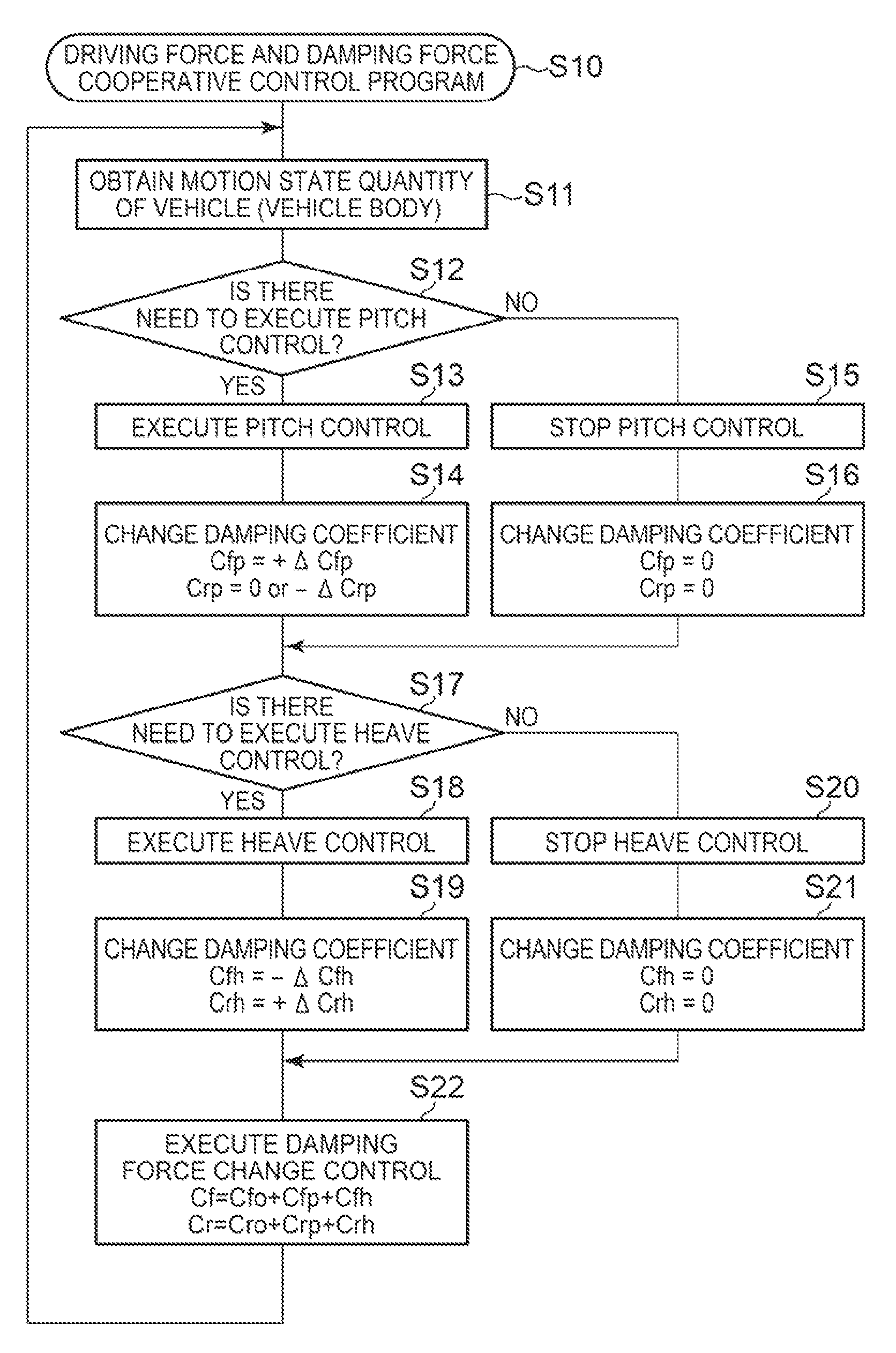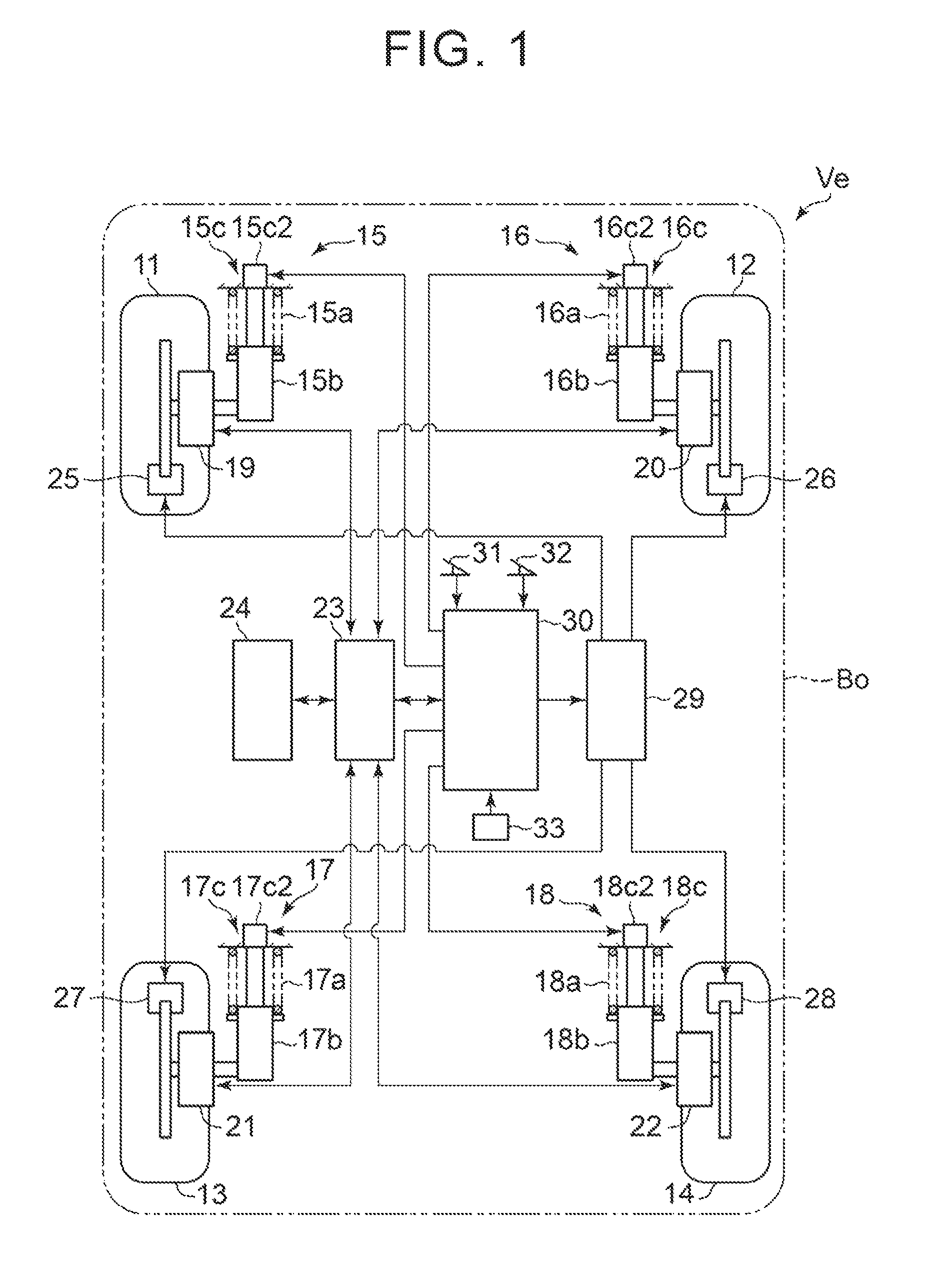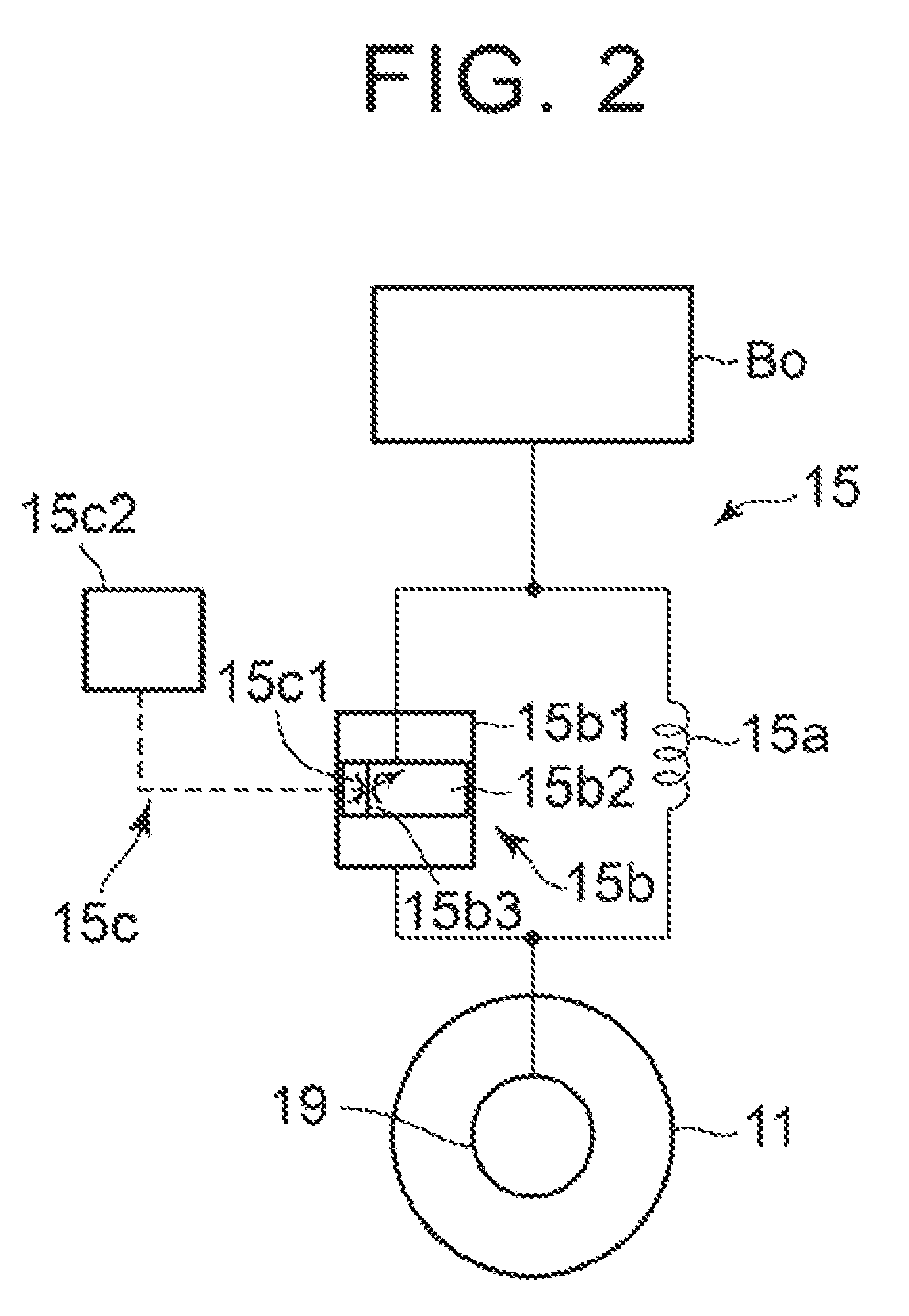Vehicle behavior control apparatus
a technology of vehicle behavior and control apparatus, which is applied in the direction of brake systems, instruments, braking components, etc., can solve the problems that the control cannot achieve the desired behavior of the vehicle body, and the unintended pitch behavior may occur on the vehicle body, so as to increase the damping force, and reduce the damping force
- Summary
- Abstract
- Description
- Claims
- Application Information
AI Technical Summary
Benefits of technology
Problems solved by technology
Method used
Image
Examples
Embodiment Construction
[0031]A detailed description will hereinafter be made on embodiments of the present invention with reference to the accompanying drawings. FIG. 1 schematically shows the structure of a vehicle Ve that is equipped with the vehicle behavior control apparatus according to the present embodiment.
[0032]The vehicle Ve includes right and left front wheels 11, 12 and right and left rear wheels 13, 14 that constitute unsprung members. Each of the right and left front wheels 11, 12 is independently supported by a vehicle body Bo that constitutes sprung members of the vehicle Ve via suspension mechanisms 15, 16. Additionally, each of the right and left rear wheels 13, 14 is independently supported by the vehicle body Bo of the vehicle Ve via the suspension mechanisms 17, 18.
[0033]The suspension mechanisms 15 to 18 include, as shown in FIG. 1, suspension springs 15a to 18a, shock absorbers 15b to 18b, and variable restriction mechanisms 15c to 18c. Here, well-known structures (such as a strut t...
PUM
 Login to View More
Login to View More Abstract
Description
Claims
Application Information
 Login to View More
Login to View More - R&D
- Intellectual Property
- Life Sciences
- Materials
- Tech Scout
- Unparalleled Data Quality
- Higher Quality Content
- 60% Fewer Hallucinations
Browse by: Latest US Patents, China's latest patents, Technical Efficacy Thesaurus, Application Domain, Technology Topic, Popular Technical Reports.
© 2025 PatSnap. All rights reserved.Legal|Privacy policy|Modern Slavery Act Transparency Statement|Sitemap|About US| Contact US: help@patsnap.com



